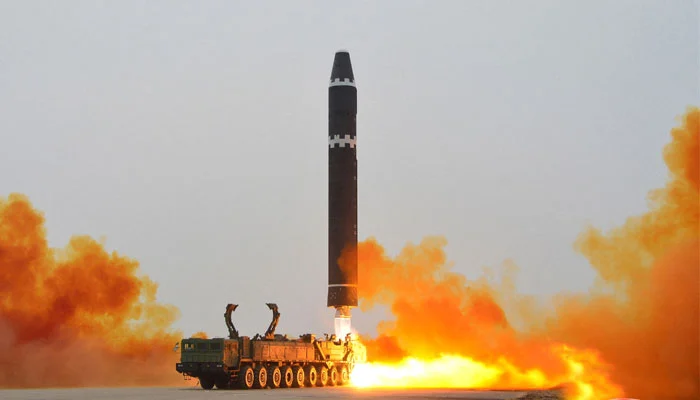North Korea recently conducted a test of a new hypersonic intermediate-range missile powered by solid propellants. This move is part of the country’s ongoing efforts to expand its nuclear and missile program, even as tensions escalate with neighboring countries and the United States.
According to North Korean state media, the test occurred shortly after the South Korean and Japanese militaries detected the launch. The missile was fired from an inland area near North Korea’s capital, heading toward the eastern sea.
Supervised by authoritarian leader Kim Jong Un, the missile—named Hwasong-16B—has been deemed a crucial component of North Korea’s nuclear deterrence strategy. Kim emphasized the need to further strengthen their capabilities to counter perceived adversaries, including the United States, South Korea, and Japan.
The Korean Central News Agency reported that North Korea has now developed nuclear-capable solid-fuel systems for various types of missiles, spanning tactical, operational, and strategic ranges. Solid-fuel weapons offer advantages in terms of mobility and concealment, as they can be launched more swiftly compared to liquid-propellant missiles, which require fueling before launch and cannot remain fueled for extended periods.
Since 2021, North Korea has also been testing hypersonic weapons designed to exceed five times the speed of sound. If successfully perfected, these systems could pose challenges to regional missile defense systems due to their exceptional speed and maneuverability. However, it remains uncertain whether North Korea’s hypersonic vehicles consistently maintained the desired speed exceeding Mach 5 during previous tests in 2021 and 2022.
In the most recent test, the missile’s hypersonic glide warhead reached a peak altitude of 101 kilometers (62 miles) after separating from the launch rocket. It then traveled approximately 1,000 kilometers (621 miles), executing various flight maneuvers before landing in the waters between the Korean Peninsula and Japan, as reported by the Korean Central News Agency.
The situation continues to be closely monitored by neighboring countries and the international community, given the potential implications for regional security and stability.
Subscribe to the YouTube channel of republicpolicy.com

















































